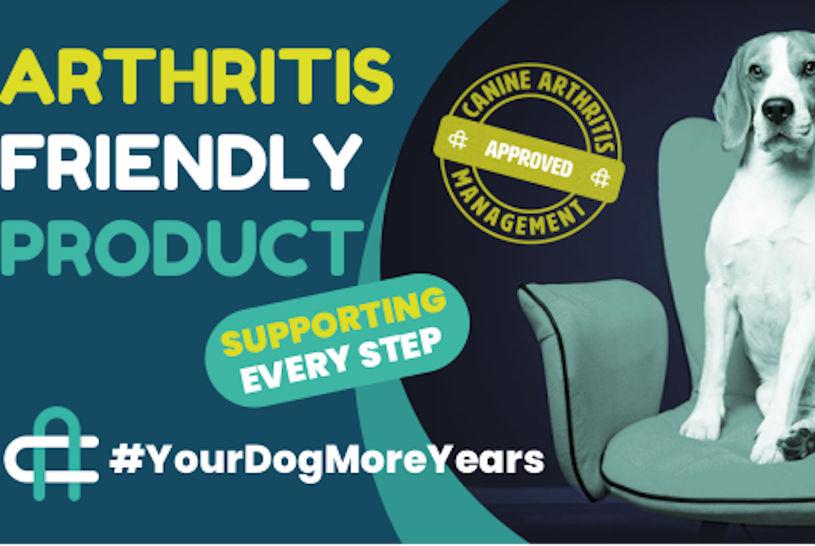
Just as humans develop arthritis with age, so do our four legged friends. Our latest guide tells you what to look out for, and how to help a dog with arthritis to have the best life in his later years.
What is arthritis?
Arthritis is a medical condition that affects joints. It occurs over time as the cartilage between the joints becomes thinner and damaged. This results in bones rubbing together leading to stiffness, swelling and pain.
What causes arthritis in dogs?
Although one of the main causes of canine arthritis is simply old age, there are other reasons a dog may develop the condition.
- Injury can be sustained at any age and where a dog suffers torn ligaments or has a wound that becomes infected, damage can occur within the joints causing inflammation and arthritis.
- Being overweight can also trigger arthritis as excess weight places stress on the joints to carry the extra load which increases the natural wear and tear on the joints.
- Some breeds of dog may be more prone to arthritis than others where they are predisposed to bone conditions such as hip dysplasia. Breeds include Golden Retrievers, Labradors, Springer Spaniels and German Shepherds. For these breeds, there are screening schemes available.
Signs of arthritis in dogs
There are several signs to look out for if you think your dog may be suffering with arthritis, both physical and behavioural.
Physical signs of arthritis in dogs
- Stiffness
- Limping
- Becoming slower or reluctant on walks
- Difficulty getting up after sitting or lying down
- Finding stairs more difficult
Behavioural signs of arthritis in dogs
- Licking painful joints (look for stained fur around joint areas)
- Irritability – arthritic dogs may dislike being touched which can lead to them being grumpy
- Being less playful
- Preferring to be by themselves
If you notice any of these signs or symptoms, a trip to the vet is needed for a correct diagnosis and treatment. However, there are steps you can take to help make life easier for your dog.
How to ease arthritis in dogs
- A firm, new bed that will support painful joints will help, and consider positioning several around the home to give your dog plenty of choice as well as the opportunity to rest wherever they are.
- Elevating food and water bowls will stop your dog lowering their head which pulls on joints and there are lots of suitable stands available.
- Take shorter walks – three or four shorter walks a day will be kinder on painful joints than two long walks – and think about the ground you are walking on. Concrete and tarmac might be too hard and your dog will prefer softer grassy paths.
- Avoid muddy ground too as this may lead to dogs slipping, and try to pick flat, level routes.
- Ensuring your flooring at home is not slippery is very important too; sliding and slipping is not good for arthritic joints, so ensure nails are kept trimmed.
Non-slip flooring for dogs
Carpet is undoubtedly soft and warm but it isn’t practical, particularly for younger pups and older dogs who are prone to accidents. The alternatives of wood, ceramic or laminate flooring may be more durable for humans but is far too slippery and dogs falling on it are in for a hard landing. At Floors for Paws, our Pawsafe Domestic range offers the best of both worlds! Easy to clean, water- and scratch-resistant, the range has been endorsed by CAM, Canine Arthritis Management. Its unique comfort backing gives cushioning for painful joints, and dogs will find it comfortable to lie on as it is not cold to the touch.
Offering a wide choice of contemporary and classic designs, the Pawsafe Domestic range is suitable for all styles of home and if you can’t decide, why not order three free samples. Our experience and friendly team is available to help answer any questions and can be contacted by phone on 01937 830948 or email at info@floorsforpaws.com

